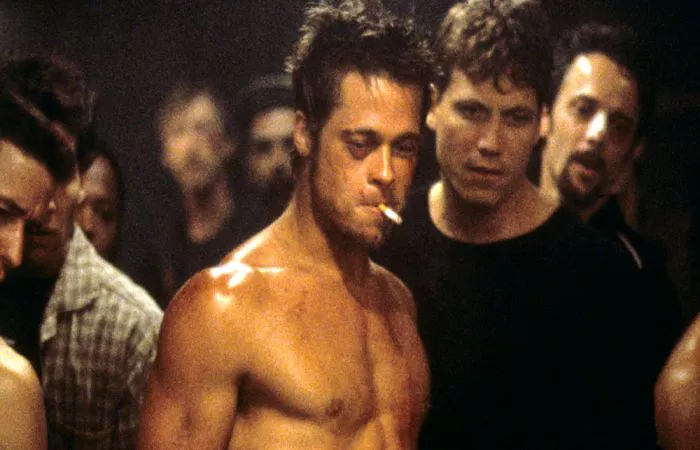Chuck Palahniuk’s novel “Fight Club” and David Fincher’s film adaptation are both revered for their gritty exploration of societal disillusionment and toxic masculinity. While the film remains faithful to the novel’s core themes, there are notable differences that distinguish the two mediums. In this analysis, we explore five key differences between the book and the film adaptation of “Fight Club.”
1. Structure and Narrative Flow
One significant difference between the book and the film is the structure and narrative flow. Palahniuk’s novel employs a nonlinear storytelling technique, with fragmented scenes and disjointed timelines that reflect the protagonist’s fractured psyche. The book delves deeper into the narrator’s internal monologue and existential musings, providing a raw and introspective portrayal of his descent into anarchy.
In contrast, the film streamlines the narrative for cinematic impact, focusing on visual storytelling and character dynamics. Director David Fincher introduces stylistic flourishes and inventive editing techniques to enhance the film’s pacing and thematic resonance, resulting in a more streamlined and accessible narrative.
2. Characterization and Development
The portrayal of characters in the book differs slightly from their on-screen counterparts. In Palahniuk’s novel, the unnamed narrator (played by Edward Norton in the film) exhibits a more introspective and unreliable demeanor, grappling with existential angst and inner turmoil. His internal struggles are fleshed out through vivid inner monologues and psychological introspection.
In the film, the narrator’s character is portrayed with a heightened sense of immediacy, driven by visual cues and dynamic performances. Tyler Durden (played by Brad Pitt) embodies a charismatic and enigmatic figure in both mediums but is more restrained in the novel’s nuanced depiction of his relationship with the narrator.
3. Plot Expansion and Adaptation Choices
The film adaptation of “Fight Club” expands certain plot elements and compresses others to fit the constraints of cinematic storytelling. Some scenes and subplots from the novel are condensed or omitted entirely in the film adaptation. For example, the book explores more extensively the support groups attended by the narrator and Marla Singer, providing deeper insights into their emotional struggles.
Additionally, the film’s climax diverges from the novel’s ending, emphasizing visual spectacle and thematic closure. Director David Fincher injects his signature style into the film’s conclusion, amplifying the impact of key plot twists and character revelations.
4. Visual Imagery and Stylistic Choices
David Fincher’s direction infuses “Fight Club” with a distinctive visual style that diverges from Palahniuk’s prose. The film’s cinematography, editing, and production design evoke a gritty and atmospheric tone, complementing the novel’s themes of urban decay and psychological turmoil.
Fincher’s adaptation emphasizes visual symbolism and surreal imagery, such as the iconic fight club sequences and Tyler Durden’s anarchistic manifestos. The film’s aesthetic choices enhance the narrative’s thematic depth, providing a visceral and immersive experience for viewers.
5. Ending and Interpretation
One of the most notable differences between the book and the film is the interpretation of the ending. While both versions share core thematic elements, the novel’s conclusion leaves certain aspects more open to interpretation, allowing readers to ponder the narrator’s ultimate fate and psychological evolution.
In contrast, the film adaptation offers a more definitive resolution, emphasizing closure and thematic cohesion. Director David Fincher opts for a visually striking and thematically resonant climax, underscoring the film’s philosophical underpinnings and societal critique.
Conclusion: Adaptation and Artistic Choices
In conclusion, the adaptation of “Fight Club” from book to film involves a series of artistic choices and narrative adjustments that distinguish the two mediums. While both the novel and the film explore similar themes of identity, consumerism, and rebellion, each version offers a unique interpretation of the protagonist’s existential journey.
Chuck Palahniuk’s raw and introspective prose lays the groundwork for David Fincher’s visually dynamic and thematically rich adaptation. Together, the book and the film of “Fight Club” stand as complementary works that challenge conventions and provoke thought about the complexities of contemporary existence. Whether experienced on the page or on the screen, “Fight Club” continues to resonate as a seminal exploration of societal alienation and individual rebellion.
Related Topics:
Film Review: “Fight Club” (1999)
Deciphering the Meaning and Key Points of “Inception”

